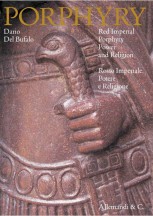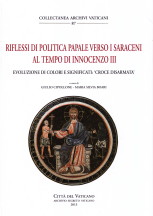Prof. Dario Del Bufalo
Specialist in stone sculpture , colored marbles , glyptics , restoration and Geoarchaeology
Magister Vitellius Setinus at “Spoleto Arte”
by Vittorio Sgarbi
The series of lectures presented at Spoleto on remarkable characters closes with one on Franco Vitelli, a man of uncertain age, although he was known to be active between 1282 and 1299. He is the last member of the Cosmati family who has created marvellous inlaid geometric stone ‘carpets’ with classical taste and oriental patterns that defy time. Not only because of the chosen formal element but also because they are timeless, from an era where time has stopped, which for a thousand years, and another thousand years no other new forms evolve. Magister Vitellius works in the same manner as a 13th century stone engraver. He does not produce an illusion but an antique reality on floors, like carpets, which are the equivalent to wall mosaics. Not painted glass but pieces of pietre dure, marble, pâte de verre and gold; ancient stones from a Rome that never dies, a Rome that continues to live in a Christian civilisation, from the Middle Ages to the Renaissance, and is alive still today.
In this way the last of the Cosmati does not carry out restorations but he invents: he lays marble fragments from gravestones and recovered columns. As Raniero Gnoli and Dario Del Bufalo show us, Magister Vitellius rediscovers the lost order using his instinct, cultivated with research, culture and study. He is cited in 1287 amongst the members of the Schola Addestratorum Mappulariorum et Cubiculariorum.
Magister Vitellius is the heir of Giovanni Cosmati, educated between Subiaco and Civita Castellana and active in Santa Maria in Cosmedin and San Benedetto in Piscinula. The floor of Bramante’s tempietto in San Pietro al Montorio remains unfinished yet is so perfect that his ancestors in heaven appreciate his work. A shadow of God’s perfection.
Abstract art finds its archetype in the work of the Cosmati, in the perfect geometry, in the harmony that is not made up of figures, saints and Virgin Marys as in Byzantine mosaics, but of ordered geometric designs. Therefore abstract art came about between the 12th and 13th centuries and continues today, in a timeless space, which is also our time. The art is contemporary.
Franco Vitelli was born in 1955, in Sezze, in the region of Latina. He graduated in sculpture from the Academy of Fine Arts in Frosinone. All his works reveal an intense desire to experiment and to study tradition and antiquity. A fascination for time is rediscovered in the objects of the past. Time that is deposited like precious dust that when removed, gives new life to the works.
The artist from Sezze wants to give back to the present all that could be forgotten or destroyed over the years. This is Franco Vitelli’s job and mission in his Sectilia workshop: to create marble mosaics using elegant, traditional techniques.
The love for art – for the ancient marbles in particular – and the capacity to play with the combinations of materials and colours in a most original way, make Franco Vitelli the most experienced artist in the field, so much so he was commissioned the restoration of the Porziuncula at Assisi.
Together with his collaborators, he spent months reconstructing the floor of the presbytery of the small church outside Assisi, within the church of Santa Maria degli Angeli, below the frescoes by Perugino. A long, slow job, conducted in a rigorous and passionate way, paying attention to every detail: from the research and mapping of the floor to the numbering and cataloguing of the marbles, to the final restoration. During the course of the renovation, the original church floor was discovered, that had already been restored by St. Francis in 1206.
Vitelli’s work is driven by a great respect for the past and for the actual testimonies that time has delivered to us today. For this reason and for the fear of losing – intervening manually – the ancient Opus signinum floor, he studied an ingenious system. By inserting the reconstructed marble floor in a platform, which can be elevated, within a structure composed of two iron rings, in this way, he creates a sort of surface that can be raised which meant that the rectangular part of the reassembled surface could be separated and at the same time the underlying area of the original floor could still be exhibited.
But this is just one example of the skill of the master from Lazio. He has also contributed to the restoration of the Cathedral of Gaeta and Palazzo Colonna in Rome. In April 2012, he celebrates twenty years of his activity in Sezze, with the exhibition Sectilia – 20 anni d’arte marmoraria presented by Dario Del Bufalo, President of the Università dei Marmorari in Rome, of which the artist is special member. Vittorio Sgarbi and Folco Quilici will be present at the opening of the exhibition, having always been interested in Vitelli’s genius. Vitelli’s talent is expressed not only in the use of raw materials, the precision of the cut, in the sophistication of his combinations and elegance of the compositions, but also and above all, in the spiritualistic ability to unite and connect the new with the old, going beyond all limits of time, to restore art with the power of eternal emotions.
By Vittorio Sgarbi
 English
English Italiano
Italiano


